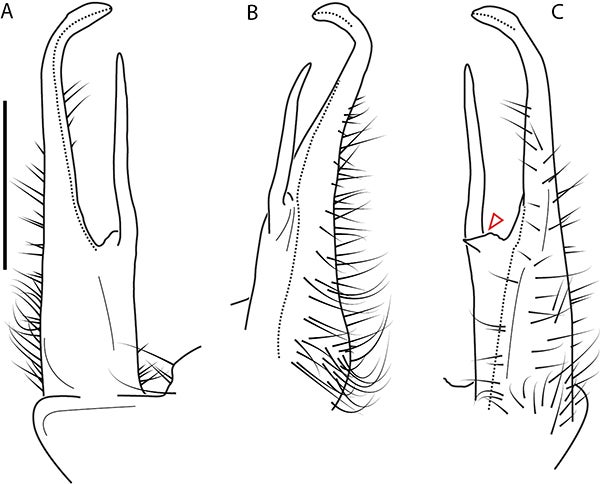Two new millipede species named for ECU employees
What’s long and flat, has many pairs of jointed legs, and is named for an East Carolina University employee?
Two newly described species of millipedes, Nannaria breweri and Nannaria spruilli, were named in honor of ECU’s Dr. Michael Brewer, associate professor of biology, and Chad Spruill, biological safety officer.

Two newly described millipede species were named in honor of ECU employees, including Nannaria breweri, named for Michael Brewer, associate professor of biology. (Contributed images)
Dr. Paul Marek, associate professor of entomology at Virginia Tech and an ECU alumnus, recently ensured that the pair’s contributions to his work will be permanently recognized in the names of the two species.
Marek, Spruill and Brewer were graduate students together in the biology lab of former faculty member Jason Bond in the late 2000s, and Spruill and Brewer helped Marek collect specimens of these species. Spruill said the experience was one that helped shape his studies.
“That first collecting trip set me on a trajectory to work with millipedes, and I continued to do so through graduate school,” Spruill said. “I feel privileged to have been part of the discovery and honored that Paul decided to name one after me.”
Describing and naming species is an important and ongoing process, according to Marek.
“Our basic knowledge of the animals with which we share our planet is limited,” he said. “Through exploration of Earth, scientists have scratched the surface and described just 12% of species on the planet.
“This is unsatisfactory because species’ biodiversity provides us with important goods and services like water filtration, medicines, decomposition, foods and fibers. Without a basic knowledge of biodiversity through taxonomy — which is the science of naming and describing species — realizing the benefits of biodiversity to humanity is impossible.”
Millipedes fulfill an important role as decomposers in forests, he said, breaking down decaying organic matter and recycling its nutrients for future generations of life to use.
“However, they are among the least known of any animal group in the U.S.,” he said.
Brewer said there are around 12,000 described species of millipedes, but there could be as many as 80,000 species in the world.
It’s not uncommon for a species to be named after someone who contributed to the discovery of a species or to its research, Brewer said. “The patronym, when you name it after a person, is a long-standing tradition in taxonomy,” he said. “But it’s still a big deal to have one named after you. It’s an incredible honor.”
The names will be a permanent part of the scientific record of the millipede genus Nannaria.
Marek said he chose to honor Spruill and Brewer for their help in collecting the new species, but also in honor of ECU’s contribution to his career.
“The Department of Biology at ECU provided me the tools and techniques to become an independent researcher, and the faculty and staff were very supportive and provided encouragement,” he said. “For example, even though at one point I dented the department’s truck while doing fieldwork, and felt really bad about it, they explained that while it wasn’t great that there was a big dent in the side, it was a small price to pay to freely support research in the department and foster a positive environment for scientific inquiry.”
Marek’s research was published in April and is available at ZooKeys.
